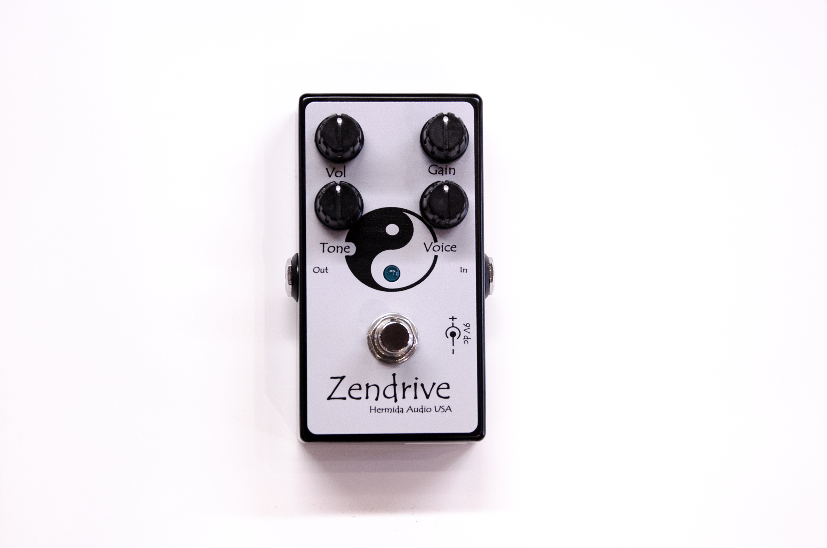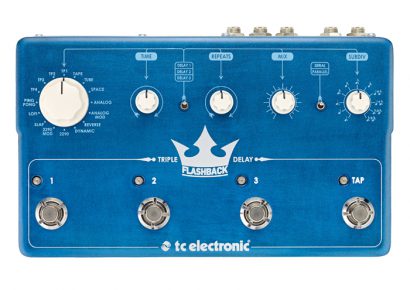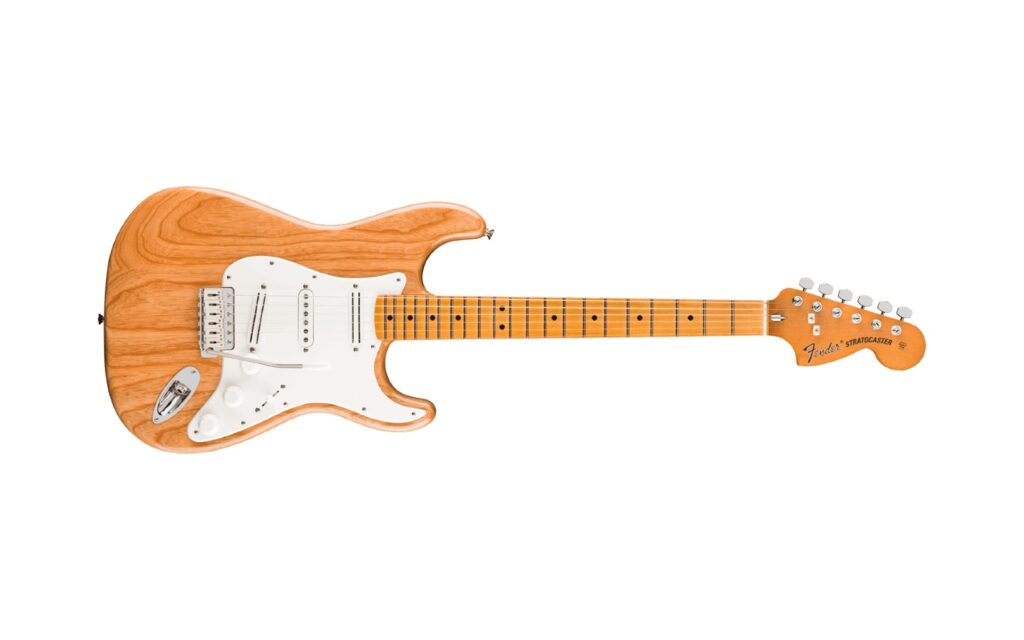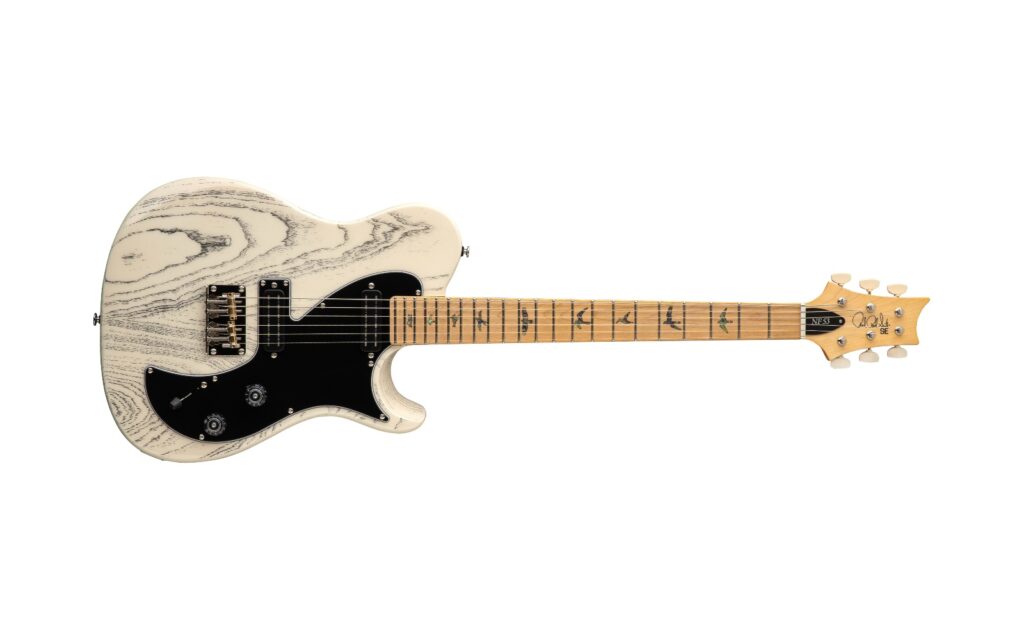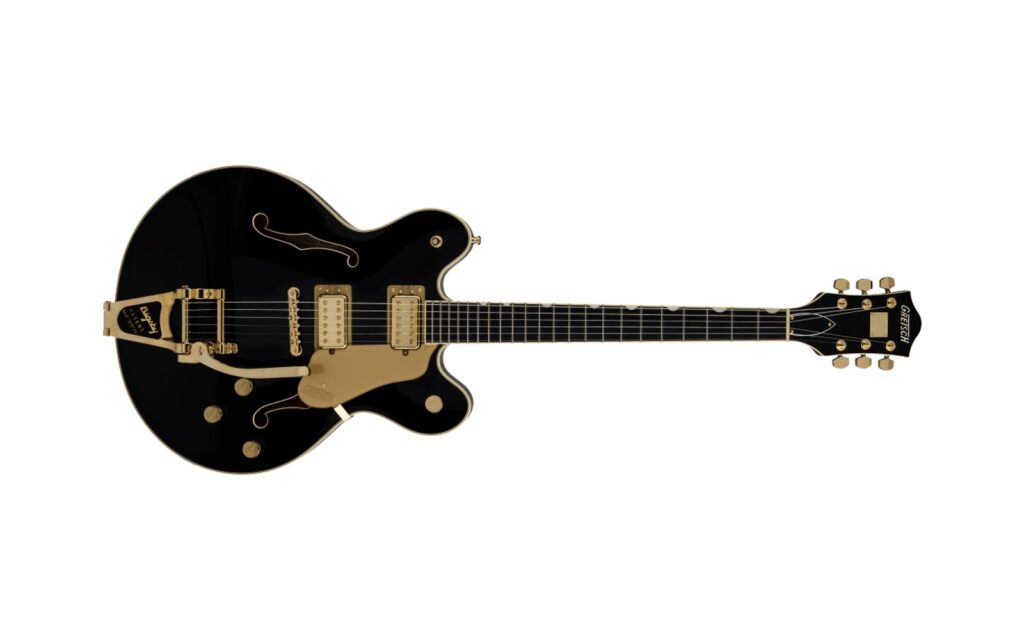The Zendrive has four controls: Volume, Gain, Tone, and Voice. Battery access is the old-fashioned way: unscrew the bottom of pedal. Otherwise there’s a 9v DC jack below the input jack. For testing I used a Michael Kelly 1957 guitar, a Telecaster-like design with a flame maple top, Michael Kelly humbucker in the neck position and Seymour Duncan Little ’59 in the bridge (with coil splits for each pickup), through my Marshall DSL50’s clean channel.
The first three knobs do pretty much what you’d expect, although they seem carefully voiced to never, ever make you suck. The fourth is really fun because it utterly revoices the pedal. Turn all the way to the left and the sound becomes very dark and deep, yet it never looses power. Go all the way to the right and it becomes extremely edgy and cutting, with that same hair and grit around the edges that you would expect from a very high-quality valve amp turned up very, very loud. The Zendrive has a cutting upper-midrange poke, and this voicing is slightly deceptive in that it makes you feel like you’re playing through more gain than you are, perhaps at louder volumes than you are as well. It seems to goose the guitar sound in just the right frequencies to give you that same kind of confidence in your playing that you feel when you’re hiding behind a wall of gain, and yet it preserves every little detail and nuance and makes you want to play at your best.
There are some really amazing tones lurking in the extremes of the Tone and Voice pedals, especially when you max out one and turn the other right down. In other words, if you’ve got the Voice control cranked to its edgiest, you can soften the corners by turning down the Tone control. Or if you’ve cranked Tone to ten, you can get a smooth, creamy, sunny-sounding solo voice by turning Voice all the way down. There are also various ‘sweet spots’ here and there that you’ll find as you explore different balances of these two controls, and some of them are emphasised more when the gain is lower rather than higher. It’s kind of amazing that a pedal designed with one particular sound in mind is so very interactive and adaptable, but there it is. And the Zendrive pumps out enough output to work really nicely as a boost pushing an overdriven amp into distortion.
This is one of those pedals that rewards you for investing time in it and for listening to it and reacting to it rather than simply playing through it. It’s definitely one for those who want to be heard rather than players who want to mesh into the musical landscape
